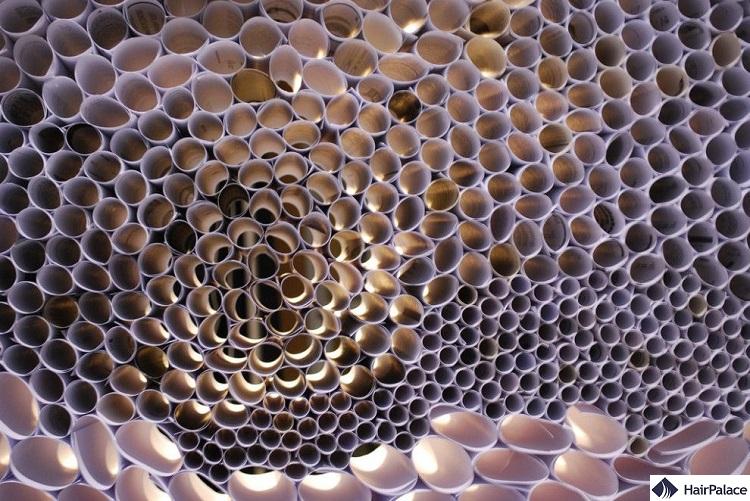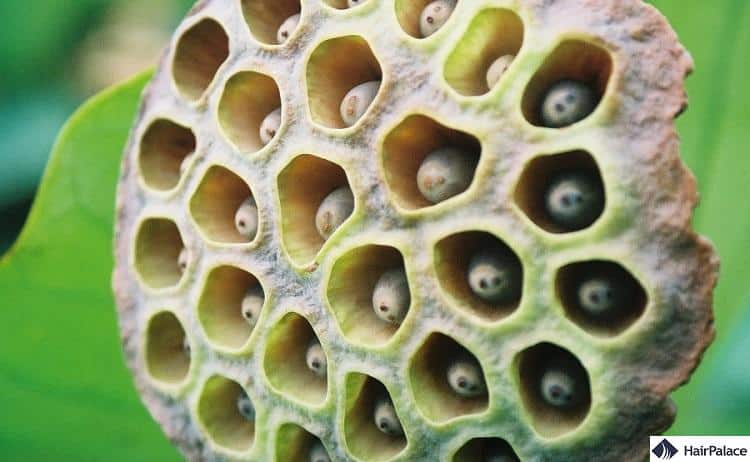How to Overcome Hair Transplant Trypophobia
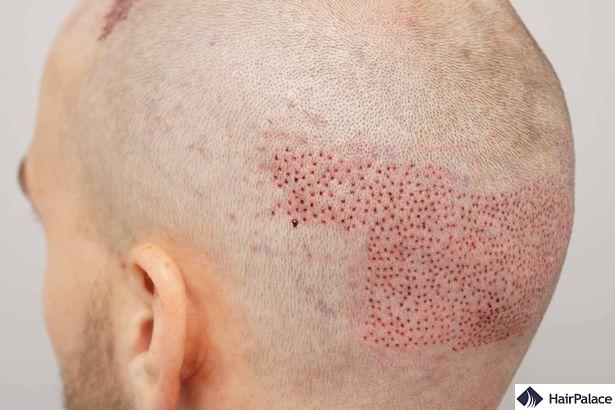
Do you feel distressed or sickened by the sight of closely packed holes? If so, you may have trypophobia, the fear of small holes or bubbles.
People with this phobia may feel uncomfortable or have an irrational fear of holes or speckled patterns.
In extreme cases, this may lead to excessive stress or generalised anxiety disorder.
Hair transplantation leads to circular holes caused by the tiny incisions made in the scalp, which may trigger this phobia.
This article will cover everything you need to know about this phenomenon.
We will also give you some useful tips on how to overcome your fear of tiny holes and achieve stunning results with hair transplant surgery.
- What it is
- Causes
- Test
- Trypophobia and hair transplants
- When will the hair transplant holes disappear?
- Recovery
- Managing trypophobia
What is Trypophobia?
Trypophobia (meaning fear of holes) is an anxiety disorder characterized by intense fear and discomfort of objects that have clusters of small holes or bumps.
Hair transplant trypophobia is the fear of hair transplant holes that appear on the donor and recipient area during the surgery.
During Follicular Unit Extraction (FUE) hair transplants, the surgeon uses a special micro-punch device to extract follicles from the back and side of the head.
This hair transplantation technique leads to the creation of tiny holes in the affected areas.
If you suffer from a fear of hair transplant holes you may feel discomfort whenever you spot these holes in the mirror.
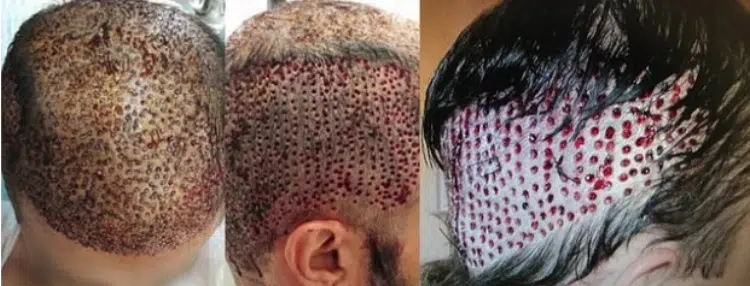
What are the symptoms?
The symptoms of trypophobia can be wide-ranging.
Some people experience a feeling of unease when seeing images of the objects, while others may have a full-blown anxiety attack.
Common physical symptoms of small holes phobia include nausea, sweating, rapid breathing, and a racing heart.
Some people may also experience psychological symptoms such as fear, dread, or panic.
What triggers trypophobia?
The objects that can trigger trypophobia range from sponges, honeycombs, and lotus seed pods to more abstract shapes like bubble wrap.
It is a relatively new and little-known disorder, but it appears to be a real phenomenon that affects people worldwide.
What causes trypophobia?
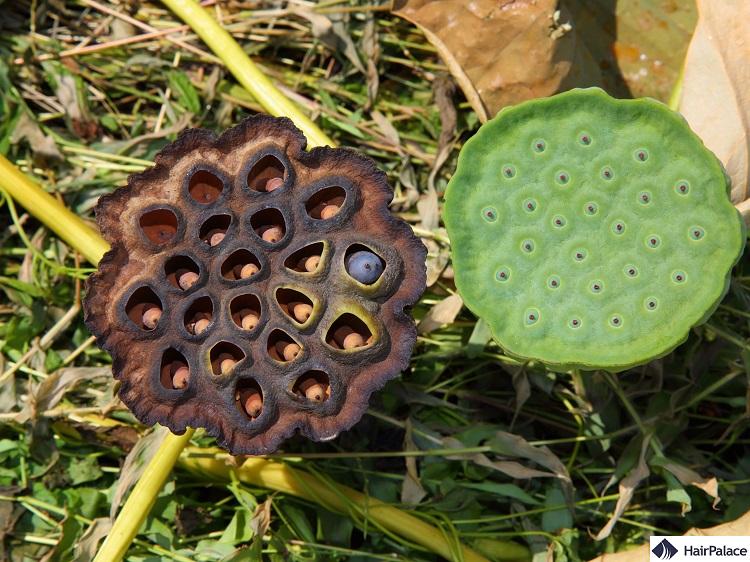
The exact cause of trypophobia is still unknown. Some studies suggest that it may be related to an evolutionary survival instinct and a fear of dangerous animals.
One theory suggests that people with trypophobia experience a fear response due to the similarity between the patterns of holes and the appearance of dangerous or toxic creatures, such as poisonous frogs or snakes.
This creates an evolutionary response in which the person avoids the object out of fear.
Another theory suggests that trypophobia may be a result of a conditioned response, in which a person has learned to fear a particular pattern due to a traumatic experience associated with it.
For example, a person may have had a traumatic experience with a snake and will then experience fear when confronted with a pattern of holes that resembles the appearance of a snake.
Additionally, some people may have a fear of the unknown, and the pattern of holes may trigger this fear response as they are uncertain as to what it is or what it represents.
It has also been suggested that trypophobia may be related to an underlying mental health condition such as anxiety or OCD.
Trypophobia image test
To diagnose trypophobia, a mental health professional will start by asking questions about the patient’s fear of objects with small holes.
The patient may also be asked to describe their physical reactions to these objects, such as sweating, nausea, or trembling.
The doctor may also ask about the patient’s history with anxiety, depression, and other mental health issues such as obsessive-compulsive disorder.
With this information, the doctor can determine whether the fear of small holes is indicative of a more severe underlying problem or simply a phobia.
Additional tests, such as psychological evaluations or brain scans, may be performed to further diagnose trypophobia.
Lastly, you can do a simple test on yourself to make a quick diagnosis. Take a good look at the following images.
If you felt any discomfort or fear, you might be trypophobic.
Hair transplant trypophobia (Fear of hair transplant holes)
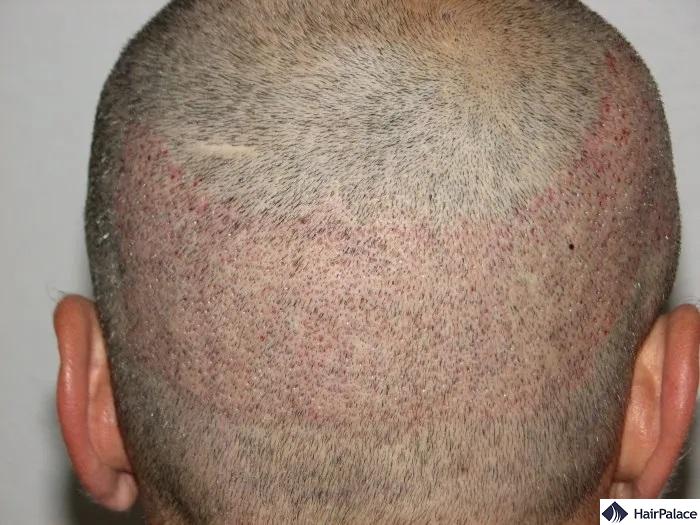
There are two main techniques used in hair restoration surgery: Follicular Unit Extraction (FUE) and Follicular Unit Transplantation(FUT).
During an FUE procedure, the donor area is shaved and the surgeon extracts hair grafts individually with the use of a micro punch device.
This instrument leads to the creation of small holes that are less than 1 millimetre in diameter.
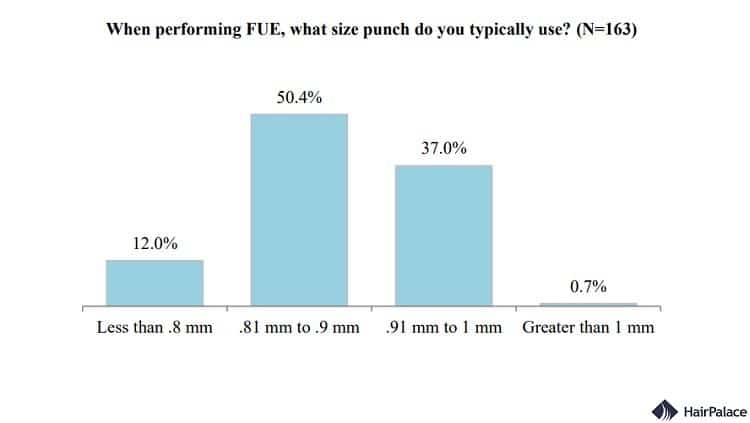
According to a survey conducted by the International Society of Restoration Surgery, over 50% of surgeons use a punch with a diameter of 0.81-0.9mm when performing FUE surgeries.
As a result, the hair transplant holes left in the donor area are typically less than 1mm wide.
And until these tiny holes heal up, they can trigger feelings of anxiety or even panic attacks.
In contrast, a FUT hair transplant involves the removal of a small strip of skin from the donor area.
This strip is then used to harvest hair follicles and insert them into the recipient sites.
This process creates a large linear scar across the donor area.
This hair transplant scar won’t trigger patients with hair transplant trypophobia, as it is linear rather than circular.
Additionally, FUT creates a single scar rather than dozens of tiny scars.
Thus the procedure is unlikely to trigger patients with hair trypophobia as the presence of a cluster of holes or bumps only triggers the disorder.
FUT hair transplants might be more fitting for patients with trypophobia.
However, it is important to remember that both techniques lead to the creation of tiny holes in the recipient area.
Therefore, getting a hair transplant will always carry a certain risk if you suffer from trypophobia.
When do hair transplant holes disappear?
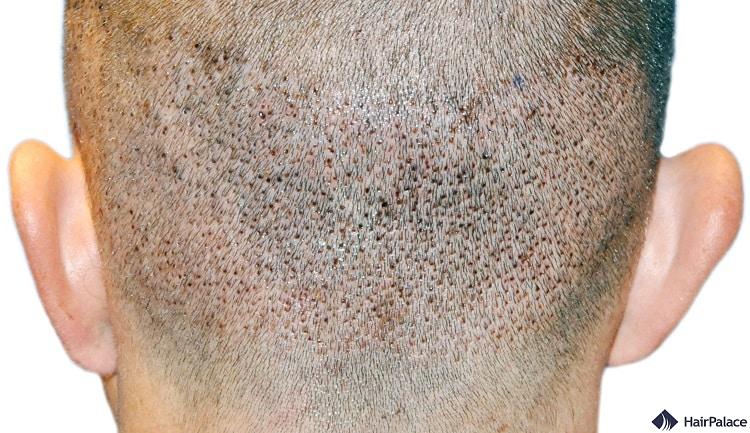
Hair transplant holes typically take a few weeks to heal, but the exact amount of time it takes for them to disappear will depend on the individual’s healing rate and the size of the holes.
While some patients have reported that their holes have healed within weeks, others have found it takes up to six months or longer for them to heal.
Generally speaking, larger holes may take longer to heal than smaller ones.
The donor site will be left with small holes that need to heal for the new hairs to start growing.
This healing process can take some time, but a patient’s hair transplant holes should eventually fade and disappear completely.
It is important to follow your doctor’s post-operative instructions and practice proper scalp hygiene to help speed up the healing process of tryphophobia holes in the head.
See our guide on hair transplant timeline for further information on recovery.
How can you speed up the recovery process?
The first step to speeding up your hair transplant recovery process is to keep the area clean.
Cleaning the area regularly with a mild shampoo, keeping it dry, and applying a cool compress can all help to reduce any discomfort and help promote healing.
Additionally, it is important to follow post-operative instructions provided by your doctor, such as not using hair products or brushing the area for a certain period of time.
In addition to keeping the area clean and following instructions, it is important to avoid any activities that could irritate the area or stress the transplanted hair follicles.
This includes avoiding vigorous exercise, wearing tight hats or headbands, and avoiding contact sports.
Additionally, it is important to avoid smoking and drinking alcohol, as these activities can hinder the healing process.
Another step to speeding up your hair transplant recovery process is to get plenty of rest and stay hydrated.
This will help to reduce inflammation and promote healing. Additionally, eating a healthy diet full of vitamins and minerals can help to promote healthy hair growth.
Supplements such as biotin, zinc, and iron can be beneficial in helping to promote hair growth.
Lastly, it is important to speak with your doctor about any concerns you may have, as they can provide personalized advice on how to best speed up your recovery process.
How to overcome FUE hair transplant trypophobia
Various methods can be used to help patients beat their fear of FUE hair transplant holes or trypophobia, from exposure therapy to stress management techniques.

1. Only get treated by professional clinics
To ensure that your trypophobia is not triggered by your hair transplant holes in your head, you should choose an experienced surgeon.
Choosing an inexperienced surgeon may lead to the creation of wide, sunken holes. This is usually due to the use of outdated methods.
Professional clinics and experienced surgeons will employ the right hair transplantation technique and tools during your surgery.
And modern techniques lead to smaller holes and less scabbing. These micro scars are much less likely to trigger hair transplant trypophobia.
Additionally, a skilled surgeon will make sure not to overharvest your donor area. This also leads to fewer scars overall. The ones that do get created, will be easily concealed by the hair surrounding the area.
2. Exposure Therapy
Getting a hair transplant at a reputable clinic is the most important step, but exposure therapy can also serve as trypophobia treatment.
This is a type of behavioural therapy that is widely used in the treatment of anxiety disorders.
Certain studies claim that a single three-hour session may effectively eliminate trypophobia.
The therapy reduces the anxiety caused by irregular patterns by exposing the patient to the source of their fear in a safe environment.
Over time, this can effectively alleviate feelings of anxiety and distress.
3. Cognitive Behavioural Therapy (CBT)
CBT or Cognitive Behavioural Therapy is used for the treatment of various mental disorders, and it is also considered to be effective for the fear of hair transplant holes.
CBT helps patients identify the signs of experiencing a trypophobic reaction to an object.
The therapy continues by teaching some relaxation techniques to reduce anxiety before it escalates.
Over time the patient can learn to adjust the fear of holes, and decrease the sense of threat that comes from trigger objects.
This can enable patients to regain control over their daily life.
4. Medication
While there is currently no medication aimed at treating trypophobia, there is medication for the treatment of anxiety.
Your doctor can prescribe such medication if the anxiety after your hair transplantation becomes unbearable.
Beta-blockers may be prescribed in such cases.
These reduce blood pressure and lower your heart rate, which consequently reduces stress and fear as well as anxiety.
Anti-depressants are another alternative, and may also be used for the treatment of hair transplant trypophobia.
However, these medications will only address the symptoms of this disorder. They won’t resolve the root cause of your fears.
5. Stress Management Techniques
Anxiety can be treated without medication. Practising mindfulness, breathing techniques or yoga can also help you bring down stress levels.
Spending more time in nature or doing gentle exercise can also help.
Trypophobia can be just as distressing as hair loss, but the condition shouldn’t keep you from getting a hair transplant.
If you put our tips into practice, you can overcome your fairs and achieve the head of hair of your dreams.
If you’re still concerned about being triggered by hair transplantation, then you should arrange a meeting with a therapist.
Hair Transplant Trypophobia FAQ
Trypophobia is thought to be caused by a deep-rooted aversion or fear response to closely packed holes or patterns, possibly because they subconsciously remind individuals of harmful things in the natural world that present a threat or disease. The exact cause is not well understood, but it is believed to be an evolutionary response to avoid potential hazards.
Managing trypophobia often involves cognitive-behavioral therapy (CBT) to help change the negative thought patterns associated with the phobia, exposure therapy to gradually desensitize the individual to the trigger patterns, and in some cases, mindfulness and relaxation techniques to reduce anxiety. Professional guidance from a therapist or psychologist is recommended for effective treatment.
Last medically reviewed on June 10th, 2025
- Le A, Cole GG, Wilkins A. Trypophobia: Heart rate, heart rate variability and cortical haemodynamic response. J Affect Disord. 2020 Sep 1;274:1147-1151. doi: 10.1016/j.jad.2020.06.002. Epub 2020 Jun 4. PMID: 32663944.https://pubmed.ncbi.nlm.nih.gov/32663944/
- Can W, Zhuoran Z, Zheng J. Is Trypophobia a Phobia? Psychol Rep. 2017 Apr;120(2):206-218. doi: 10.1177/0033294116687298. Epub 2017 Jan 18. PMID: 28558623.https://pubmed.ncbi.nlm.nih.gov/28558623/
- Martínez-Aguayo JC, Lanfranco RC, Arancibia M, Sepúlveda E, Madrid E. Trypophobia: What Do We Know So Far? A Case Report and Comprehensive Review of the Literature. Front Psychiatry. 2018 Feb 9;9:15. doi: 10.3389/fpsyt.2018.00015. PMID: 29479321; PMCID: PMC5811467.https://pubmed.ncbi.nlm.nih.gov/29479321/
- Cole GG, Wilkins AJ. Fear of holes. Psychol Sci. 2013 Oct;24(10):1980-5. doi: 10.1177/0956797613484937. Epub 2013 Aug 27. PMID: 23982244.https://pubmed.ncbi.nlm.nih.gov/23982244/


